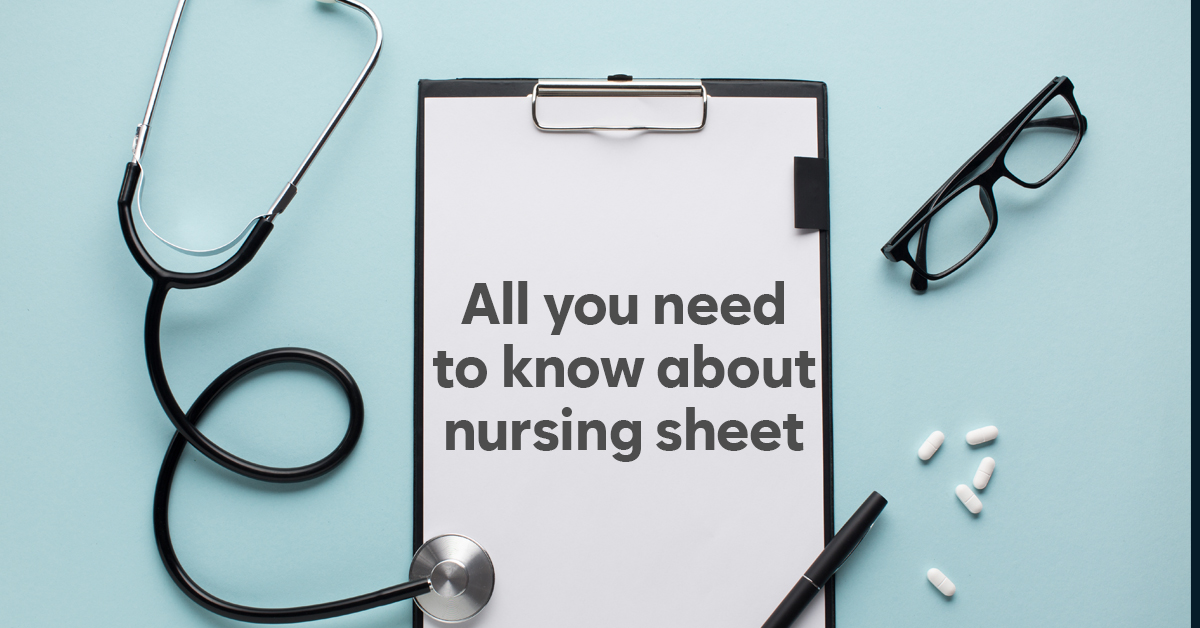Nursing report sheets, often colloquially referred to as brain sheets or patient report sheets, play a pivotal role in the day-to-day operations of a nurse’s responsibilities. These pre-made tools are indispensable for organizing and retaining crucial patient information throughout a shift.
In this blog post, we will delve into the intricacies of nursing report sheets, how nurses use them, how hospitals implement them, and the essential components that should be included.
What is a Nursing Report Sheet?
Simply put, a nursing report sheet is a personalized document containing vital information about a patient and their medical history. It serves as a quick reference guide for nurses to streamline their workflow and ensure comprehensive patient care.
How Nurses Use Brain Sheets
Nursing report sheets act as a condensed version of a patient’s chart, offering a quick overview of essential information. While nurses are expected to review patient charts regularly, the report sheet acts as an organizational tool, helping to prioritize tasks and manage responsibilities efficiently.
How Hospitals Use Them
Hospitals may adopt different approaches to the use of nursing report sheets. Some facilities utilize a single sheet updated for each shift, specific to a particular patient. Others may require nurses to create a new report sheet for every shift. These sheets may accompany patients when transferred between units and are typically discarded upon patient discharge.
How to Create a Nursing Brain Sheet
The content of a nursing report sheet can vary based on the hospital, unit, and individual preferences. Elements commonly included are patient information, medical diagnosis, attending medical provider, medications, allergies, vital signs, lab results, important procedures, family information, to-do tasks for the shift, and nursing notes. It’s essential to align the sheet’s content with hospital policies and consult with the nurse educator to determine unit-specific best practices.
Why Do You Need a Nursing Report Sheet?
The advantages of using nursing report sheets are multifaceted. Some key benefits include:
1. Accountability
Report sheets serve as a tool for accountability, ensuring that nurses stay on top of their tasks and responsibilities during a shift.
2. Improving Patient Safety
By having all pertinent patient information in one place, nurses can respond more effectively to emergencies, thus enhancing patient safety.
3. Standardized Reporting
Nursing report sheets contribute to standardized reporting practices, promoting consistency and clarity in communication among healthcare professionals.
4. Fast Access to Patient Information
The concise format of a report sheet allows for quick access to critical patient information, facilitating prompt decision-making and care delivery.
5. Keeping Charting Organized
Using a nursing report sheet helps in maintaining organized and comprehensive charting, which is crucial for continuity of care.
6. Organizing Patient Care
Report sheets aid in organizing patient care by providing a structured framework for prioritizing tasks and managing time effectively.
How to Read a Nursing Report Sheet
Nurses may adopt different strategies for reading report sheets, with some preferring a top-to-bottom approach, while others organize information based on systems. Experienced nurses often organize double-sided report sheets. One side contains patient and medical information and the reverse side features an hourly checklist to structure their shifts efficiently.
To use a nursing report sheet effectively, start by incorporating readily available chart information, such as basic patient details and health history. The remaining details can be filled in during the shift report or after a thorough review of the patient’s chart.
Conclusion
Nursing report sheets are invaluable tools for nurses seeking to optimize their workflow, enhance patient care, and maintain organized records. By understanding the components and benefits of these sheets, nurses can harness their potential for improved efficiency and effectiveness in healthcare delivery. To assist you further, we’ve included free templates that you can use to create your own nursing report sheet – download them here.
Remember, a well-organized nursing report sheet can be the key to a successful and productive shift, contributing to better patient outcomes and a more streamlined nursing practice.





